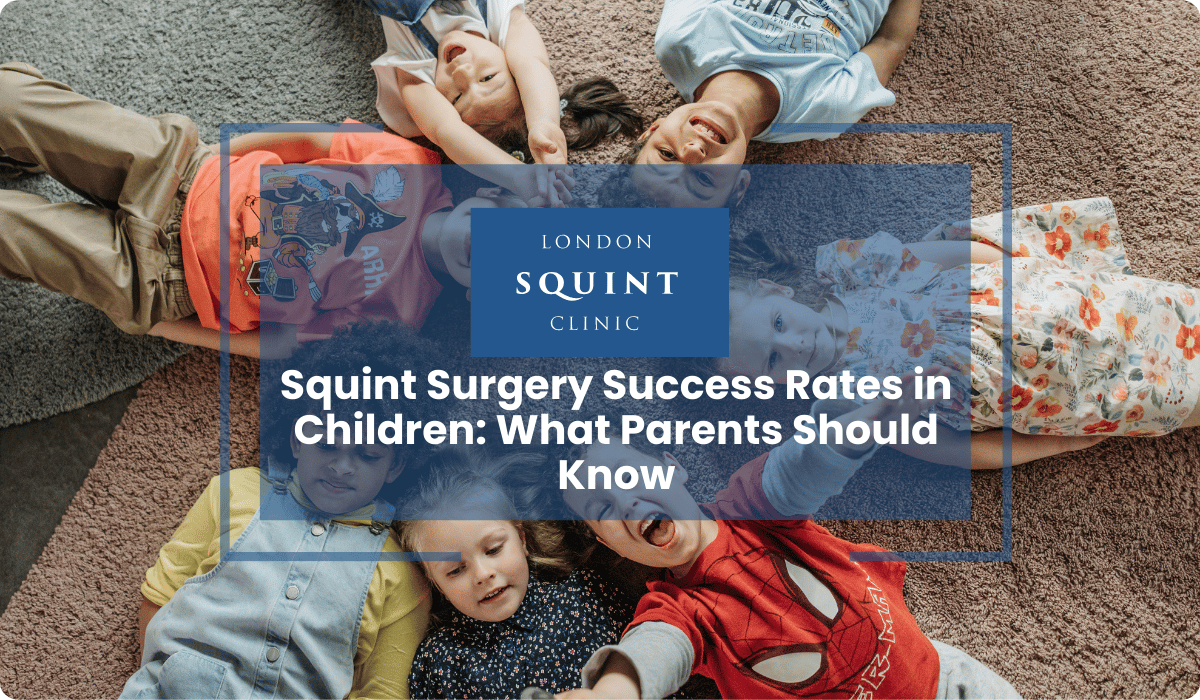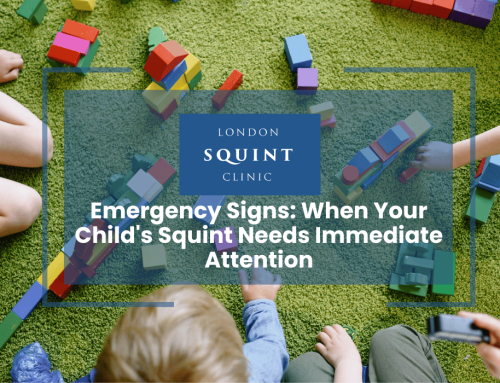Squint Surgery Success Rates in Children: What Parents Should Know
Squint Surgery Essentials: What Every Parent Should Know
- Squint surgery, also known as strabismus surgery, is a procedure performed to correct misalignment of the eyes in children.
- The most common types of strabismus treated with surgery include esotropia, exotropia, and hypertropia.
- Factors influencing success rates include the expertise of the surgeon, type and severity of strabismus, and the child’s age and overall health.
- The average success rate of pediatric squint surgery ranges from 70% to 90%.
- Risks and complications of strabismus surgery in children are generally low but may include overcorrection, undercorrection, infection, or bleeding.
- Proper recovery and aftercare, including following post-operative instructions and attending follow-up appointments, are crucial for achieving the best outcomes.
- Parents can maximize their child’s squint surgery outcomes by choosing an experienced surgeon, ensuring comprehensive pre-operative evaluation, and adhering to all care instructions.
- The optimal timing for squint surgery in children depends on factors such as the type and severity of strabismus and the child’s age and visual development.
Here is the blog post content with the specified requirements:
Table of Contents
- Understanding Pediatric Squint Surgery: An Overview
- Types of Strabismus Treated with Surgery in Children
- Factors Influencing Squint Surgery Success Rates
- What is the Average Success Rate of Pediatric Squint Surgery?
- Risks and Complications of Strabismus Surgery in Kids
- Recovery and Aftercare Following Pediatric Squint Surgery
- How to Maximize Your Child’s Squint Surgery Outcomes
- When is the Best Time for Squint Surgery in Children?
Understanding Pediatric Squint Surgery: An Overview
Squint surgery, also known as strabismus surgery, is a procedure performed to correct misalignment of the eyes in children. The goal of the surgery is to restore proper eye alignment and improve binocular vision. Paediatric squint surgery involves adjusting the extraocular muscles that control eye movements to achieve proper alignment. The surgery is typically performed under general anaesthesia and requires precise techniques to ensure optimal outcomes. Understanding the basics of paediatric squint surgery can help parents make informed decisions about their child’s treatment options and set realistic expectations for the results.
Types of Strabismus Treated with Surgery in Children
Several types of strabismus can be effectively treated with surgery in children. The most common types include esotropia (inward turning of the eye), exotropia (outward turning of the eye), and hypertropia (upward deviation of the eye). Other less common forms of strabismus that may require surgical intervention include intermittent strabismus, paralytic strabismus, and restrictive strabismus. The specific surgical approach and technique used will depend on the type and severity of the strabismus, as well as the child’s age and overall health. A skilled paediatric ophthalmologist will carefully evaluate each child’s unique case to determine the most appropriate surgical plan.
Factors Influencing Squint Surgery Success Rates
Several factors can influence the success rates of squint surgery in children. One of the most important factors is the expertise and experience of the paediatric ophthalmologist performing the surgery. Other factors that can impact success rates include the type and severity of the strabismus, the child’s age at the time of surgery, and the presence of any underlying medical conditions or vision problems. Proper pre-operative evaluation and planning, as well as adherence to post-operative care instructions, can also play a role in determining the success of the surgery. Parents should discuss these factors with their child’s ophthalmologist to gain a better understanding of the expected outcomes.
What is the Average Success Rate of Pediatric Squint Surgery?
The success rates of paediatric squint surgery can vary depending on the specific type of strabismus and other individual factors. However, in general, the average success rate of squint surgery in children is quite high, ranging from 70% to 90%. This means that the majority of children who undergo squint surgery experience significant improvement in eye alignment and binocular vision. It is important to note that success is often defined as a significant reduction in the angle of misalignment, rather than perfect alignment. In some cases, additional surgeries or non-surgical treatments may be necessary to achieve optimal results. Parents should have realistic expectations and discuss the potential outcomes with their child’s ophthalmologist.
Risks and Complications of Strabismus Surgery in Kids
As with any surgical procedure, there are potential risks and complications associated with paediatric squint surgery. Some of the most common risks include overcorrection or undercorrection of the eye alignment, infection, bleeding, and adverse reactions to anaesthesia. In rare cases, more serious complications such as vision loss or damage to the eye muscles can occur. However, the overall risk of severe complications is low when the surgery is performed by a qualified and experienced paediatric ophthalmologist. Parents should discuss the potential risks and benefits of the surgery with their child’s doctor and follow all pre- and post-operative instructions carefully to minimize the risk of complications.
Recovery and Aftercare Following Pediatric Squint Surgery
Proper recovery and aftercare are essential for achieving the best possible outcomes following paediatric squint surgery. Immediately after the surgery, children may experience some discomfort, swelling, and redness around the eyes. Pain medication and cold compresses can help alleviate these symptoms. Children will need to rest and avoid strenuous activities for several days to allow the eyes to heal properly. Follow-up appointments with the ophthalmologist will be scheduled to monitor the healing process and assess the results of the surgery. In some cases, eye patches, glasses, or eye exercises may be recommended to enhance the recovery process. Parents should closely follow the post-operative care instructions provided by their child’s doctor to ensure a smooth and successful recovery.
How to Maximize Your Child’s Squint Surgery Outcomes
There are several steps parents can take to maximize their child’s squint surgery outcomes. One of the most important is to choose a highly qualified and experienced paediatric ophthalmologist to perform the surgery. Parents should also ensure that their child receives a comprehensive pre-operative evaluation to accurately diagnose the type and severity of the strabismus and develop an individualized treatment plan. Adhering to all pre- and post-operative instructions, including administering any prescribed medications and attending follow-up appointments, is crucial for optimal results. Encouraging the child to wear glasses or an eye patch as directed and perform any recommended eye exercises can also help enhance the outcomes of the surgery. By working closely with their child’s ophthalmologist and following all care instructions, parents can help their child achieve the best possible results from squint surgery.
When is the Best Time for Squint Surgery in Children?
The optimal timing for squint surgery in children depends on several factors, including the type and severity of the strabismus, the child’s age, and overall visual development. In general, earlier intervention is often recommended to prevent the development of amblyopia (lazy eye) and promote proper visual development. For some types of strabismus, such as infantile esotropia, surgery may be performed as early as 6 to 12 months of age. In other cases, surgery may be delayed until the child is older and better able to cooperate with the pre- and post-operative process. The decision of when to perform squint surgery should be made in consultation with a paediatric ophthalmologist who can assess the child’s individual needs and recommend the most appropriate timing for intervention. You can read more about the best age for squint surgery in children in our article here.
Frequently Asked Questions
What is the success rate of squint surgery in children?
The success rate of squint surgery in children is generally high, ranging from 70% to 90%. Success is often defined as a significant reduction in the angle of misalignment, rather than perfect alignment. Factors such as the type and severity of the strabismus, the child’s age, and the surgeon’s expertise can influence the success rate.
How long does it take to recover from pediatric squint surgery?
Recovery time after pediatric squint surgery varies depending on the individual child and the extent of the surgery. Most children experience some discomfort, swelling, and redness around the eyes for a few days following the procedure. Children typically need to rest and avoid strenuous activities for several days to allow the eyes to heal properly. Follow-up appointments with the ophthalmologist are necessary to monitor the healing process.
Is squint surgery painful for children?
Squint surgery is performed under general anesthesia, so children do not experience pain during the procedure itself. However, some discomfort, swelling, and redness around the eyes are common after the surgery. Pain medication and cold compresses can help alleviate these symptoms, and most children recover comfortably within a few days.
Can squint surgery be repeated if the first attempt is unsuccessful?
Yes, in some cases, additional surgeries may be necessary to achieve optimal eye alignment if the first surgery does not provide the desired results. The decision to perform a second surgery depends on various factors, such as the remaining angle of misalignment, the child’s age, and the presence of any underlying conditions. The ophthalmologist will assess the situation and recommend the best course of action.
Are there any age restrictions for pediatric squint surgery?
The optimal timing for squint surgery in children depends on the type and severity of the strabismus and the child’s overall visual development. Some types of strabismus, such as infantile esotropia, may require surgery as early as 6 to 12 months of age. In other cases, surgery may be delayed until the child is older and better able to cooperate with the pre- and post-operative process. A pediatric ophthalmologist can assess the child’s individual needs and recommend the most appropriate timing for intervention.
What are the potential risks and complications of squint surgery in children?
Potential risks and complications of pediatric squint surgery include overcorrection or undercorrection of the eye alignment, infection, bleeding, and adverse reactions to anesthesia. In rare cases, more serious complications such as vision loss or damage to the eye muscles can occur. However, the overall risk of severe complications is low when the surgery is performed by a qualified and experienced pediatric ophthalmologist.
How can parents help their child achieve the best possible outcomes from squint surgery?
To maximize a child’s squint surgery outcomes, parents should choose a highly qualified and experienced pediatric ophthalmologist, ensure their child receives a comprehensive pre-operative evaluation, and adhere to all pre- and post-operative instructions. This includes administering prescribed medications, attending follow-up appointments, encouraging the child to wear glasses or an eye patch as directed, and performing any recommended eye exercises. Working closely with the ophthalmologist and following all care instructions can help children achieve the best possible results from squint surgery.
Find out if you are suitable for Double Vision Treatment
Not everyone is eligible for double vision surgery.
Find out if you could benefit from this life-changing surgery by taking the quick self-suitability quiz below:
Our most popular procedures

Hello, I’m Nadeem Ali
I’m one of the few eye surgeons in the world with 100% focus on Squint and Double Vision Surgery.
I have 24 years of eye surgery experience, and worked for 13 years as a Consultant at London’s renowned Moorfields Eye Hospital.
In 2023, I left the NHS to focus fully on treating patients from across the world at the London Squint Clinic. You can read more about me here.
There’s lots of information on the website about: squint surgery, double vision surgery and our pricing.
The most rewarding part of my job is hearing patients tell me how squint or double vision surgery has changed their lives. You can hear these stories here.
Mr Nadeem Ali
MA MB BChir MRCOphth FRCSEd(Ophth)





